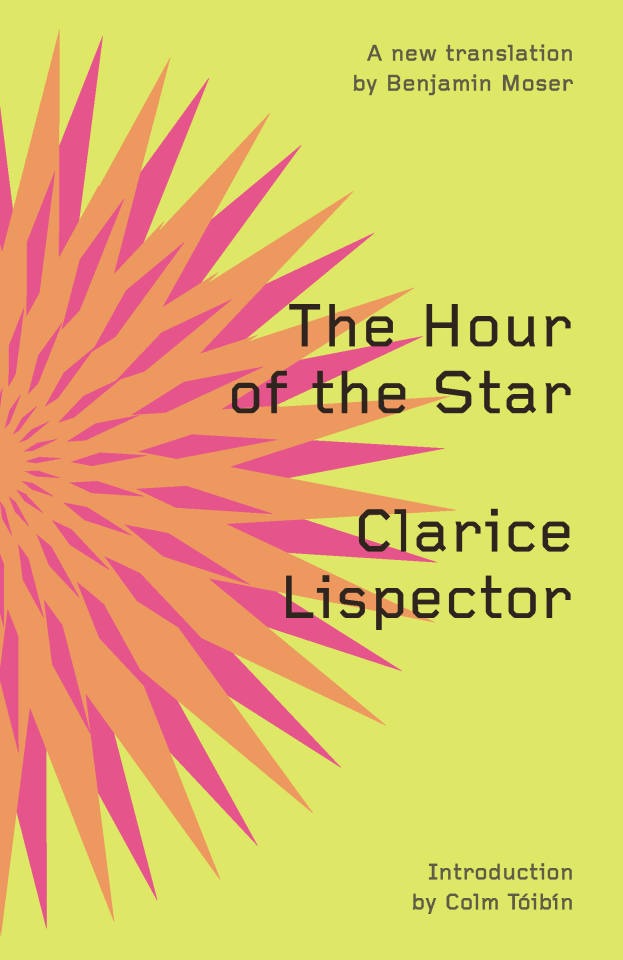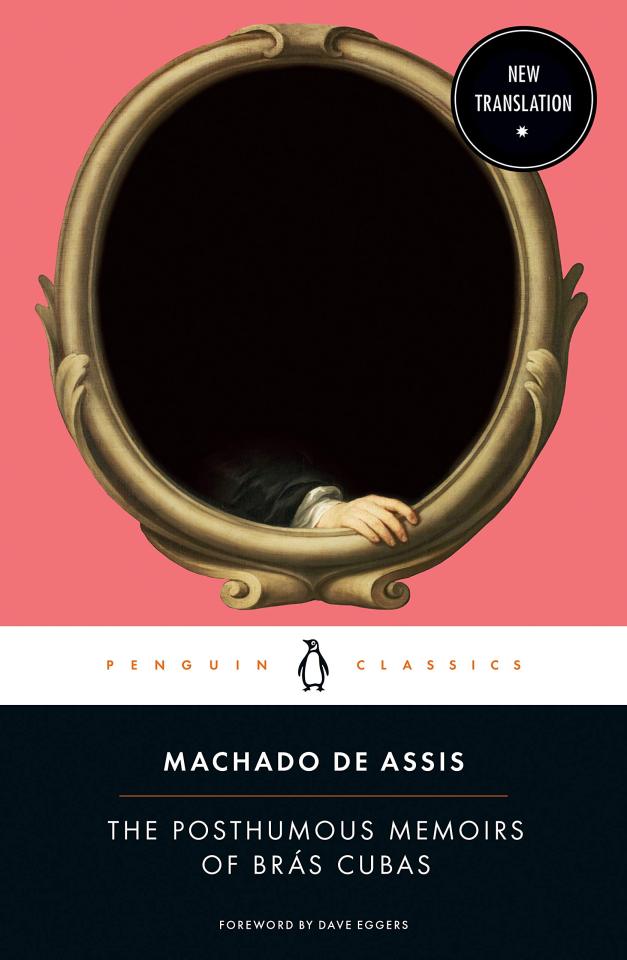#assumpcao
Explore tagged Tumblr posts
Text

Sōlaria Metropolis - Amanda Assumpção
1 note
·
View note
Text
Brazil general blames former boss for January 8 intelligence blackout

Retired Army General José Russo Assumpção Penteado, who served as Brazil’s deputy head of intelligence until early this year, told local lawmakers in Brasília on Monday that his former boss Gonçalves Dias “withheld” key information that would have prevented the invasion of the presidential palace by hordes of pro-Bolsonaro rioters on January 8.
“All the actions carried out by the Institutional Security Office (GSI) on January 8, 2023, are directly related to the withholding by [former] minister Gonçalves Dias of the alerts produced by Brazilian Intelligence Agency (Abin), which were not made available in a timely manner so that all means of the Shield Plan could be activated,” Gen. Penteado said.
The Shield Plan refers to a security operation to protect the presidential palace and other presidential buildings. According to Gen. Penteado, if Gen. Dias had forwarded the intelligence he received, the Shield Plan “would have prevented the invasion.”
Gen. Penteado also told local lawmakers that he had “no information” that demonstrators camped for two months near the Army’s headquarters were planning a coup. However, a report by the Justice Ministry found that the protest camp was “central” to the unrest.
Continue reading.
#brazil#politics#brazilian politics#democracy#january 8#Jose Russo Assumpcao Penteado#mod nise da silveira#image description in alt
0 notes
Text
Traditional scholarship in the history of science associates the quantifiable, universal human body with the European Enlightenment or ‘new science’. This measurable, universal body, it is argued, came to define modern medicine. Behind it lay the driving forces of political economy, [...] life insurance, and modern industrial [profit] [...]. But this widely accepted history of the universalisation and systemisation of human corporeality [...] [also involves] an earlier global history of enslaving and measuring bodies in the Indies, born of the Iberian slave trade between Africa and colonial Iberian America. It was in the violent and profitable world of this slave trade that [some particular] universal concepts and calculations of health risks, disease and bodily characteristics [...] emerged. [...] [T]he scale of data production about bodies in the early modern world of Iberian slave trading [was immense] [...].
The key concept in this early modern quantification of the body was the pieza de Indias (Spanish) or peça da India (Portuguese). [...]
The appearance of this new measure and epistemology was intimately linked to the unprecedented rise in the size and complexity of the transatlantic commerce in human bodies during the first decades of the 17th century. The new [...] measure of man was the result of the slave trade’s need to quantify the risks of investing in human corporeality and its modern afflictions. By the late 16th century, Iberian slave traders, governments, corporations and financiers from around Europe (particularly from Genoa, Florence and the Netherlands) were already thinking of the transportation of slave bodies as units of risk.
---
The original licences for slaves transacted in Iberia were contractual concepts that did not refer to bodily characteristics [...] [and] were of limited help [...] for calculating the productivity [of a slave's body] [...]. Consequently, slave traders and slave-trading organisations, including the House of Trade (Casa de Contratación) in Seville, developed methodologies that allowed them to translate slave bodies into numbers and calculate the inherent value [...] as it related to an increasingly normalised, constant unit called the pieza. The concept of the pieza (the piece) allowed for the creation of contracts where investors, providers and the state could prospectively calculate tariff, gains and risk using quantifiable notions of bodies [...].
In addition to peça, Portuguese slave traders [in West Africa] used several other terms to refer to slaves who were not adult [...], reflecting an increasingly rich taxonomy [...]. Muleque or muleca [...]. Slave traders began using these terms to refer to young bodies that they discounted at rates [...]. Calculating the value of cañengues, muleques and mulecas by converting them into standard adult [...] piezas was a common practice [...]. Portuguese officials in Sao Paulo da Assumpcao de Loanda deployed the concept when they tallied ‘the dispatch’, or fees due to the Portuguese crown, for the embarkment of African slaves bound for the Americas. Such methods to appraise slave bodies became normative in Spanish America for determining the tariffs that traders had to pay [...]
[C]rown officials were counting the ‘pieces of slaves’ (piezas de esclavos) disembarking in Santo Domingo and selling them to miners [...] [and] hacienda owners [...] to work in the mines and estates of the island. [...] [A] concept of an ideal body for transportation and labour [...] had emerged across the Atlantic, and during the first decades of the 17th century it was disseminated across the Pacific and Indian Oceans, being widely used in Dutch trading records. [...] [S]lave traders and government officials used the term pieza to talk about other captive bodies from the Indies, most notably native or 'Indian' bodies in the Caribbean.
---
The concept of the piece of the Indies appears in full form in the 1660s as part of negotiations of the terms of the asiento de negros or slave monopoly between the Spanish crown and the Genoese financiers Domingo Grillo and Ambrosio Lomelín. The contract with the Grillos established that they would ‘bring 24,500 blacks, piezas de Indias, over the course of seven years and starting in 1662’. The monopoly established as one of its conditions that ‘the said quantity of blacks should be piezas de Indias, each one seven cuartas of height and up’. [...]
Slave traders used height as a proxy for life histories of health and nutrition and as a predictor of the slave’s potential productivity [...] [and] created a complex system around the marker of height [...].
[H]aving grey hair, for instance, translated into a reduction in value of one cuarta or one-seventh of the standard pieza. The conditions of 'cloud in one eye [cataracts]' signified a reduction of two cuartas; scurvy, two cuartas; phlegm, one and one-half cuartas; a 'benign hernia', one cuarta [...]. Being older than 35 years merited a one-cuarta deduction [...]. The presence of lobanillos (small tumours) was worth one and one-half cuartas’ reduction; small fingers, one-half cuarta; incapacitating scars (burns), one and one-half cuarta; [...] localised ulcers, one-sixth of a cuarta; generalised ulcers, one cuarta; [...] short-sightednesss, two cuartas; [...] missing molars, one cuarta [...].
---
The contractual articulation of the concept [...] formalised slave-based knowledge production about human bodies. The contract assembled a vast storehouse of knowledge, much of it held in the House of Trade in Seville, obtained from thousands of records of bodily characteristics and diseases for hundreds of thousands of bodies [...].
The Grillos’ contract set a precedent for the 1679 contract between Spanish and Portuguese merchants and the Dutch West India Company. The 1696 asiento between Spanish crown and [financier F.M.] and [financier N.P.], for example, agreed they would transport 10,000 tonnes of freight including 30,000 piezas de Indias of the ‘regular measure of seven cuartas’. Similarly, a 1709 contract between the French Compagnie de Guinée and Dutch slave traders, settled in Amsterdam, specified that the French would pay 110 pièces de huit (pieces of eight) ‘for each black piece of Indies’ delivered in the Caribbean.
As the ‘new science’ of the European Enlightenment dawned in Europe, the piece of the Indies was well established [...].
---
All text above by: Pablo F. Gomez. "Pieza de Indias: Slave Trade and the Quantification of Human Bodies". A chapter in New World Objects of Knowledge: A Cabinet of Curiosities (edited by Mark Thurner and Juan Pimentel), pp. 47-50. Published 2021. [Bold emphasis and some paragraph breaks/contractions added by me. Presented here for commentary, teaching, criticism purposes.]
#abolition#caribbean#tidalectics#pathologization#intimacies of four continents#archipelagic thinking#indigenous#carceral geography#geographic imaginaries#indigenous pedagogies#black methodologies
15 notes
·
View notes
Text

Hello everyone! This month I'm bringing back the "A Trip To..." series. Last time we went on a trip to Ireland, and this time we're going to Brazil! This is a list full of novels that take place in Brazil, and are written by Brazilian writers. Thank you so much to someone who suggested this to me in our last survey.
As always, don't forget to vote for our next book using the link at the bottom of the post. Onto the books!
Blood-Drenched Beard, by Daniel Galera and translated by Alison Entrekin

—So why did they kill him? —I’m getting there. Patience, tchê. I wanted to give you the context. Because it’s a good story, isn’t it?
A young man’s father, close to death, reveals to his son the true story of his grandfather’s death, or at least the truth as he knows it. The mean old gaucho was murdered by some fellow villagers in Garopaba, a sleepy town on the Atlantic now famous for its surfing and fishing. It was almost an execution, vigilante style. Or so the story goes.
It is almost as if his father has given the young man a deathbed challenge. He has no strong ties to home, he is ready for a change, and he loves the seaside and is a great ocean swimmer, so he strikes out for Garopaba, without even being quite sure why. He finds an apartment by the water and builds a simple new life, taking his father’s old dog as a companion. He swims in the sea every day, makes a few friends, enters into a relationship, begins to make inquiries.
But information doesn’t come easily. A rare neurological condition means that he doesn’t recognize the faces of people he’s met, leading frequently to awkwardness and occasionally to hostility. And the people who know about his grandfather seem fearful, even haunted. Life becomes complicated in Garopaba until it becomes downright dangerous.
Spilt Milk, by Chico Buarque and translated by Alison Entrekin

As Eulalio Assumpcao lies dying in a Brazilian public hospital, his daughter and the attending nurses are treated--whether they like it or not--to his last, rambling monologue. Ribald, hectoring, and occasionally delusional, Eulalio reflects on his past, present, and future--on his privileged, plantation-owning family; his father's philandering with beautiful French whores; his own half-hearted career as a weapons dealer; the eventual decline of the family fortune; and his passionate courtship of the wife who would later abandon him. As Eulalio wanders the sinuous twists and turns of his own fragmented memories, Buarque conjures up a brilliantly evocative portrait of a man's life and love, set in the broad sweep of vivid Brazilian history.
The Hour of the Star, by Clarice Lispector translated by Benjamin Moser

Narrated by the cosmopolitan Rodrigo S.M., this brief, strange, and haunting tale is the story of Macabéa, one of life's unfortunates. Living in the slums of Rio and eking out a poor living as a typist, Macabéa loves movies, Coca-Colas, and her rat of a boyfriend; she would like to be like Marilyn Monroe, but she is ugly, underfed, sickly and unloved. Rodrigo recoils from her wretchedness, and yet he cannot avoid the realization that for all her outward misery, Macabéa is inwardly free/She doesn't seem to know how unhappy she should be. Lispector employs her pathetic heroine against her urbane, empty narrator—edge of despair to edge of despair—and, working them like a pair of scissors, she cuts away the reader's preconceived notions about poverty, identity, love and the art of fiction.
Captains of the Sand, by Jorge Amado translated by Gregory Rabassa

They call themselves “Captains of the Sands,” a gang of orphans and runaways who live by their wits and daring in the torrid slums and sleazy back alleys of Bahia. Led by fifteen-year-old “Bullet,” the band—including a crafty liar named “Legless,” the intellectual “Professor,” and the sexually precocious “Cat”—pulls off heists and escapades against the right and privileged of Brazil. But when a public outcry demands the capture of the “little criminals,” the fate of these children becomes a poignant, intensely moving drama of love and freedom in a shackled land.
The Posthumous Memoirs of Brás Cubas, by Machado De Assis and translated by Flora Thompson-DeVeaux

The ghost of a decadent and disagreeable aristocrat decides to write his memoir. He dedicates it to the worms gnawing at his corpse and tells of his failed romances and halfhearted political ambitions, serves up harebrained philosophies, and complains with gusto from the depths of his grave. Wildly imaginative, wickedly witty, and ahead of its time, the novel has been compared to the work of everyone from Cervantes to Sterne to Joyce to Nabokov to Borges to Calvino, and has influenced generations of writers around the world.
Please vote for our next book here.
#book list#Brazil#Brazilian literature#blood-drenched beard#daniel galera#spilt milk#chico baurque#the house of little stars#clarice lispector#captains of the sand#jorge amado#the posthumous memoirs of bras cubas#machado de assis
39 notes
·
View notes
Text
The first arts
Pedro Assumpcao
A long time ago, precisely 25 thousand years before Christ, the first artistic forms appeared. Back then, People used to paint the things they saw every day on the cave walls, such as animals. Over time, the arts changed, the first carved sculptures, statues and paintings appeared, making art never stops evolving. At that time it was easy to answer the simple question: What is art? It could be the sculpture of a philosopher, a God, etc.
Arriving at the renaissance period, the arts became increasingly important and magnified, starting to have high values and to be financially supported by the bourgeoisie, for example, as they became a form of social status.
Over time, As time went by, the meaning of art changed, reaching modern times, in which the meaning of art is something very broad, it can have several meanings and each person can have their own interpretation of the same art, as often what the artist wanted to express is not explicit.
The arts are no longer things just like sculptures, paintings, etc., they are things that can be interacted with, touched, where the meaning is often hidden.
With the evolution of technology, cyberarts, virtual arts, began to emerge, such as NFTs, "virtual paintings" that you can access through electronic devices and have a code that makes them unique. NFTs became so popular among society that their prices increased a lot, reaching millions of dollars and making big celebrities
buy them. For example, two of them were bought by Neymar Jr for millions of dollars
Nowadays we ask ourselves the same question: What is art? And the answer is much more complex. Art can be practically anything, a simple painting, a virtual photo like NFTs or it could just be a simple object that contains something considered artistic. It could be said that nowadays this question no longer makes sense because art is whatever you want.
4 notes
·
View notes
Text

"Mo Soul" Player Playlist 15 September
Rubinho E Mauro Assumpcao - Ta Tudo Ai
Greyboy Feat. Delmos Wade - Guitar String
Ratatat - Cream On Chrome
The Maxwell Implosion - Tic Tac (Jet Sound Remix)
Agnaldo Rayol - Perigo A Vista
Laura Vane & The Vipertones - Did It Anyway
Huey Lewis & The News - Back In Time
Galliano - Stoned Again
Ben Sidran - About Love
Luther Allison - Into My Life
Lee Scratch Perry & The Upsetters - Bad Luck
DJ Nu-Mark Feat. Ernie Hines - Our Generation (Re-Edit)
Lefties Soul Connection - Doin' The Thing
Funk Busters - Groove Inc
The Frank Cunimondo Trio Feat. Lynn Marino - Feelin Good
If you really want to enjoy music and help musicians and bands, buy their lp’s or cd’s and don’t download mp3 formats. There is nothing like good quality sound!!!
(Angel Lo Verde / Mo Soul)
#mo soul#playlist#music#soul#blues#funk#jazz#lounge#reggae#rock#fusion#house#r&b#afro funk#disco funk#acid jazz#nu jazz
5 notes
·
View notes
Text
3 episódios do Podcast que você deveria ouvir
_ Planejamento Financeiro com Riko Assumpcao no Youtube Henriquecer: Podcast do Riko Assumpção Conheça meus livros: https://henriquecer.com/livros-do-riko-assumpcao/ Saiba mais sobre mim: https://henriquecer.com/about/ Acesse a Planilha de Planejamento Financeiro aqui: https://henriquecer.com/planilha-financeira-no-excel/ Henriquecer.com

View On WordPress
0 notes
Photo

RUBINHO E MAURO ASSUMPCAO / PERFEITAMENTE, JUSTAMENTE QUAN : MR.BONGO (LP) 1972年のオリジナル盤には5~6万円もの値が付くブラジリアン・サイケ・フォーク~MPBの最高峰の1枚が正規復刻!Milton Nascimento、Edu Lobo、Nana Caymmi、Dom Um Romãoらと活動してきたドラマーGegêやErasmo Carlos、Gal Costaらと共演してきたギタリストRick Ferreiraらが参加! #RUBINHOEMAUROASSUMPCAO #MRBONGO #Folk #americana #lp #strdfolk #strdlp #vinyl#record#stradarecords#dj#vinyljunkies#kobe#motomachi#strada#recordshop#recordstore#神戸レコード#元町レコード#レコード店#レコード#アナログ https://www.stradarecords.com/shop/item/28381/index.php (at Strada Records) https://www.instagram.com/p/Co7G6HOv-kx/?igshid=NGJjMDIxMWI=
#rubinhoemauroassumpcao#mrbongo#folk#americana#lp#strdfolk#strdlp#vinyl#record#stradarecords#dj#vinyljunkies#kobe#motomachi#strada#recordshop#recordstore#神戸レコード#元町レコード#レコード店#レコード#アナログ
0 notes
Text
youtube
Itamar Assumpção e Banda Isca de Polícia - Nego Dito (Lira Paulistana)
#brasil#brazil#br#art#arte#brazilian#brazilian art#arte brasileira#brazilian music#music#musica#música#música brasileira#itamar#itamar assumpção#itamar assumpcao#banda isca de polícia#banda isca de policia#80s#80's#vocals#funk#Youtube#ao vivo#live
26 notes
·
View notes
Audio
“Declaração” - Anelis Assumpção
2 notes
·
View notes
Video
youtube
Marcelo D2 feat Juçara Marçal, Bk', Baco Exu do Blues e Anelis Assumpção - Rompeu o couro
#marcelo d2#jucara marcal#bk#baco exu do blues#anelis assumpcao#brazilian#rap#music#hip hop#juçara marçal#anelis assumpção
1 note
·
View note
Text
O coração inteiro é meio complexo? Florada de laranjeira tem cheiro de amor ou lima? Beterraba e coração cabem na mesma paleta de cores ou são ilusões servidas fatiadas? Laranja seleta, vitamina quem prova ou espia?
- Anelis Assumpção
0 notes
Text
Black gymnast says career derailed by racism in Brazil

Brazilian gymnast Angelo Assumpcao still wonders how far he could have gone if not for the decision he says derailed his career: speaking out against the racism he was subjected to by his white teammates.
Could he have made the Olympics? Won a medal? At 24 years old, he may never get the chance to find out.
"Some people think racism doesn't exist. I wonder where my career would be without it," he told AFP in an interview.
He got his big break in 2015, when he took the place of injured teammate Arthur Nory on the vault at the Gymnastics World Cup stage event in his hometown, Sao Paulo.
Assumpcao won gold, upsetting Brazil's leading gymnast at the time, veteran Diego Hypolito, who won bronze.
Nory put a video on social media in which he and two other young white gymnasts cracked racist jokes with a visibly uncomfortable Assumpcao.
The video went viral online, triggering outrage in Brazil, a country of 212 million people where 54 percent of the population is black or mixed race.
But Assumpcao says it was not an isolated incident.
He was regularly mocked for his skin color, hair and Afro-Brazilian heritage, he says.
He pinpoints his decision to speak out against such behavior as the moment his career started to unravel.
Continue reading.
35 notes
·
View notes
Photo


How does one stop oneself from thinking all the thoughts about @maggie-stiefvater ‘s The Raven Cycle?
idk, good question. This is definitely not the answer.
Art execution & ink by Guilherme Assumpcao at Mission Ink, SF!
1K notes
·
View notes
Photo

"Mo Soul" Player Playlist 13 January
1. Rubinho E Mauro Assumpcao - Ta Tudo Ai 2. Greyboy Feat. Delmos Wade - Guitar String 3. Ratatat - Cream On Chrome 4. The Maxwell Implosion - Tic Tac (Jet Sound Remix) 5. Agnaldo Rayol - Perigo A Vista 6. Laura Vane & The Vipertones - Did It Anyway 7. Huey Lewis & The News - Back In Time 8. Galliano - Stoned Again 9. Ben Sidran - About Love 10. Luther Allison - Into My Life 11. Lee Scratch Perry & The Upsetters - Bad Luck 12. DJ Nu-Mark Feat. Ernie Hines - Our Generation (Re-Edit) 13. Lefties Soul Connection - Doin' The Thing 14. Funk Busters - Groove Inc 15. The Frank Cunimondo Trio Feat. Lynn Marino - Feelin Good
If you really want to enjoy music and help musicians and bands, buy their lp’s or cd’s and don’t download mp3 formats. There is nothing like good quality sound!!!
(Angel Lo Verde / Mo Soul)
#mo soul#playlist#music#soul#blues#funk#jazz#lounge#reggae#rock#fusion#house#r&b#afro funk#disco funk#acid jazz#nu jazz
6 notes
·
View notes
